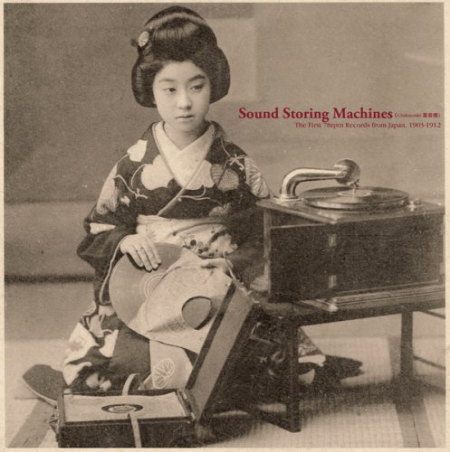VA — Sound Storing Machines: The First 78rpm Records from Japan, 1903-1912 (2021)

FLAC (tracks+.cue, log) | 37 min | Folk, Gagaku, Classical | 152 MB
1. T?gi Suenaga — Bairo 02:58
2. Heikichi Toyosawa — Senryou Nobori 02:58
3. Kamanosuke Azumaya — Chikumagawa 02:09
4. Sumako Of Shinbashi — Kappore 02:13
5. Unknown Artist — Hokai-Bushi Oiwake-Bushi 01:44
6. Sakima Uehara, Kiyokusa Takahashi, Kado Fukushira — Matsukaze (Wind In The Pines) 02:10
7. Kosan Yanagiya — Rakugo: Ukiy-Buro (Scene In A Public Bath 02:00
8. T?gi Suenaga — Taishikichou 03:12
9. Kachiguri Mimasuya — Shiokumi Kasatsukashi (Collecting Water) 02:02
10. Umewaka Manzabur? I, Umewaka Rokurou Of The Kanze Noh School — Yokyoku (From The Noh Drama Kakitsubata) 02:47
11. Hanadou Nokiken — Sanjusangen-Do Kiyori 01:59
12. Shimeju Of Yoshiwara — Neko Ja 02:55
13. Sumitayu Takemoto — Horikawa Sarumawashi 02:37
14. Haruko Tayu Takemoto — Sakaya No Dan (From Sankatsu Hanchichi) 03:07
15. Shinzaemon Toyozawa — Joruri Taiko-Ki Ju Danme 02:52
Includes the first commercial recordings from Asia made in Japan in 1903 — Japanese gagaku, shakuhachi, shamisen, storytelling, folksong and more — Collected and compiled by sound artist Robert Millis — The bning of Japan\’s homegrown record industry, including a few sides taken from Japan\’s notorious bootleg 78rpm industry The first commercial recordings from Asia were made in Japan in 1903 by Fred Gaisberg, the legendary producer and recording eeer who traveled the world making recordings for the Gramophone Company (later His Masters Voice). The recording industry barely existed at this . Man\’s ability to record and reproduce sound had only existed since 1877 (with the invention of Edison\’s cylinder phonograph) and flat disc records, what we all collect and obsess over today, had only come into being in the late 1890s.
It is a miracle what these fragile discs have survived: wars with Russia and China, the fire bombings (and worse) of World War II, modernization, the onslaught of Western media. They document, through a dreamlike haze of surface noise, a Japan that had just barely begun to open its doors to the rest of the world. Including gagaku, shakuhachi, shamisen, storytelling, folksong and more. these recordings are a unique glimpse into an ancient culture and an important document of the bnings of the recording industry. Featuring important artists and those who only appeared to sing before the strange Western recording horn and then vanished. Sound Storing Machines spans only 9 years of recording—from 1903 and the first commercial recordings made by Fred Gaisberg to 1912, the bning of Japan\’s homegrown record industry, including a few sides taken from Japan\’s notorious bootleg 78rpm industry. Collected on various trips to Japan and compiled by sound artist Robert Millis (Indian Talking Machine, Victrola Favorites, Climax Golden Twins, Phi Ta Khon: Ghosts of Isan, This World is Unreal Like a Snake in a Rope, etc).







